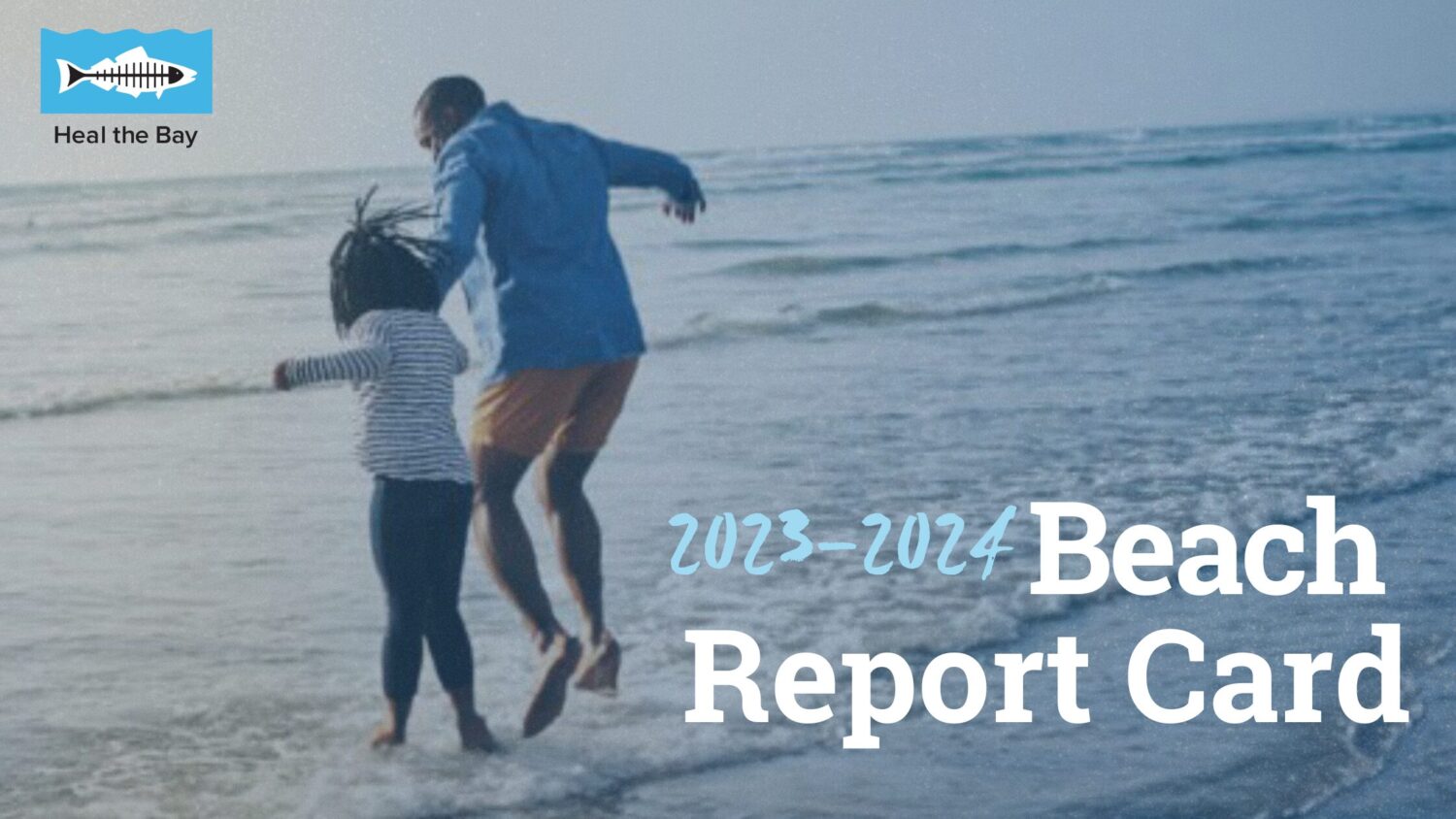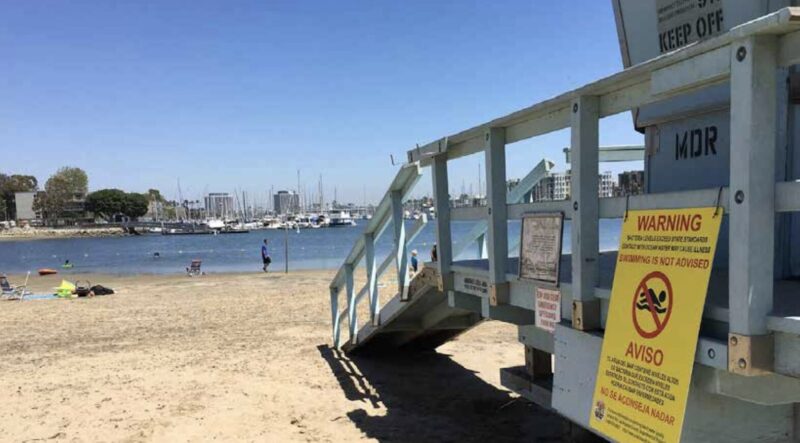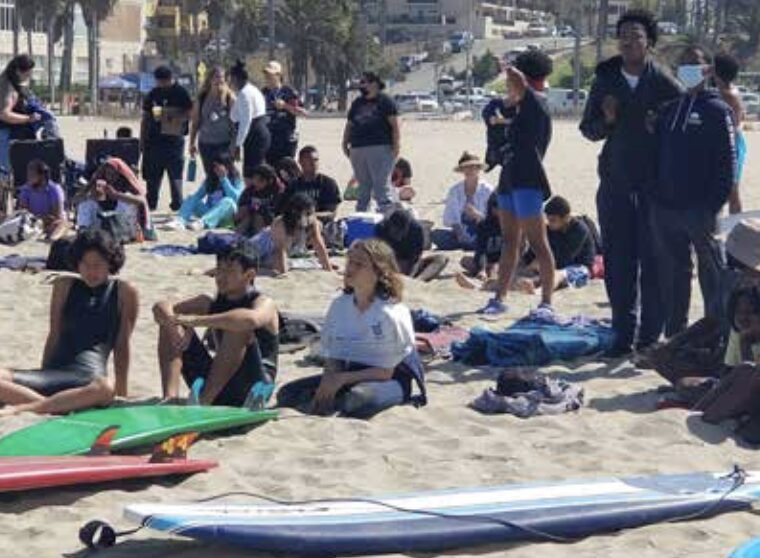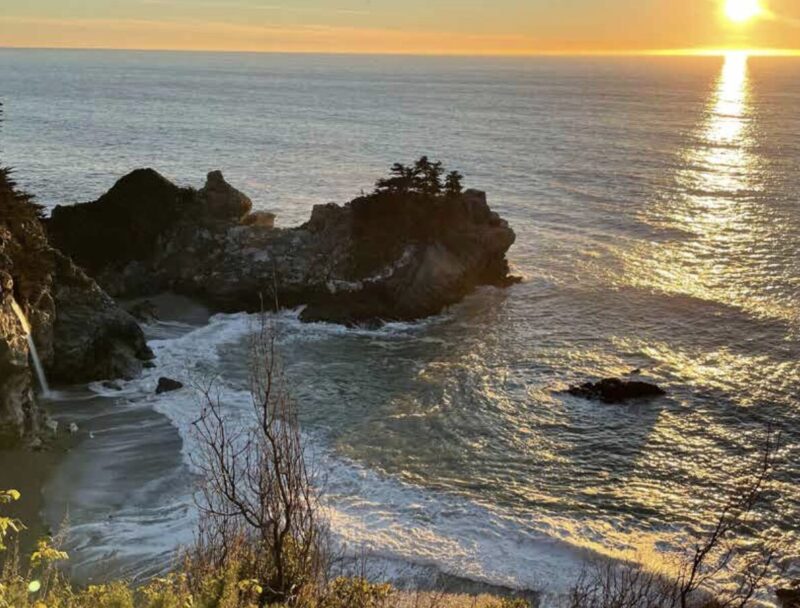Beach Report Card 2024: Water Quality at California Beaches Dips in 2023-24

Climate change, aging infrastructure cited in Heal the Bay’s annual Beach Bummer list.
Heal the Bay issued its 34th annual Beach Report Card today, issuing A-to-F grades to more than 700 beaches along the Pacific Coast based on levels of bacterial pollution in 2023-2024. The lower the grade, the greater the chance of ocean-goers getting sick.

This year’s report is really a story of two seasons – summer and not summer.
The good news is that nearly 90% of monitored California beaches received A or B water-quality grades for the dry-weather summer months. That figure is close to the state’s 10-year summer average, but does mark a 6% drop from our last Report Card.
That means beach lovers had a very good chance of finding a shoreline with safe water quality during the state’s prime ocean recreation period (April-October 2023). To read the entire report and see how your favorite beach fared, please click here.
Southern California beaches (Santa Barbara to San Diego counties) got 90% A or B grades in the summer. NorCal beaches (Del Norte to Marin counties) also earned 90% A or B summer grades, while Central California beaches (San Francisco to San Luis Obispo counties) notched 84% A or B marks.
But surfers and other year-round ocean-goers weren’t as fortunate.
During the dry winter season (Nov. 2023-March 2024), only 66% of the 501 beaches monitored in California received overall A or B grades, well below the state’s 10-year winter average.
Coastal counties in California received 31% more rainfall during the winter reporting period than the 10-year average. The deluge flushed bacteria and other pollutants through storm drains into the ocean and caused numerous sewage spills, which dramatically impacted water quality.
The poor winter grades underscore two of the biggest ongoing beach water-quality challenges for the state: worsening climate change and crumbling infrastructure.
More frequent and more severe storms will only exacerbate the urban runoff that pollutes our sea. It’s critical that the state and municipalities invest in more stormwater capture projects that will cleanse, hold and reuse water rather than sending polluted runoff to the sea. It’s a double-win for our drought-challenged state.
Separately, the state is seeing an uptick in sewage spills thanks to overtaxed sanitation systems during storms and to outdated sewer systems that are breaking down because of age or inadequate upkeep. Heal the Bay supports reasonable ratepayer increases to help sanitation agencies keep up with inflation and our new climate reality.
Heal the Bay’s annual Beach Bummer List
Here’s a ranking of the 10 most polluted beaches in Summer Dry Weather along the West coast in 2023-24:
1. Tijuana River Mouth (San Diego County)
2. Playa Blanca (Baja, Mexico)
3. Santa Monica Pier (Los Angeles County)
4. Tijuana Slough (San Diego County)
5. Linda Mar Beach (San Mateo County)
6. Lakeshore Park (San Mateo County)
7. Imperial Beach at Seacoast Drive (San Diego County)
8. Border Field State Park (San Diego County)
9. Marina del Rey Mother’s Beach (Los Angeles County)
10. El Faro (Baja, Mexico)
The Beach Bummers in San Diego County and Baja all suffer from persistent sewage issues. The Tijuana River annually discharges tens of millions of gallons of untreated sewage into the ocean, originating from inadequate sanitation infrastructure in Tijuana.
Enhancements are underway, including the U.S. EPA-funded upgrades to the Punta Bandera treatment plant and the South Bay International Wastewater Treatment Plan. Heal the Bay advises against swimming at these beaches until the upgrades are completed, which may take a decade or more.
The City of Santa Monica has wrestled for years with poor water quality at the Pier, which is plagued with droppings from roosting birds and urban runoff. The enclosed Mother’s Beach in Los Angeles County might attract families because of its placid waters, but very poor circulation has led to chronic bacterial exceedances. Families beware.
In San Mateo County, Linda Mar Beach has been impacted by pollution primarily through San Pedro Creek, which channels urban runoff directly to the ocean. Lakeshore Park, located within a network of stagnant water channels in San Francisco Bay, suffers from poor circulation and chronically impaired water quality.
 On a more positive note, 12 California beaches made Heal the Bay’s Honor Roll in this year’s report, meaning they earned perfect A+ grades every week in all summer and winter reporting periods. While that’s reason to celebrate, that total is a notable decrease from the 30-50 sites typically named as Honor Roll beaches in past reports. The very wet winter caused many past honorees to suffer from bacterial exceedances.
On a more positive note, 12 California beaches made Heal the Bay’s Honor Roll in this year’s report, meaning they earned perfect A+ grades every week in all summer and winter reporting periods. While that’s reason to celebrate, that total is a notable decrease from the 30-50 sites typically named as Honor Roll beaches in past reports. The very wet winter caused many past honorees to suffer from bacterial exceedances.
Steps you can take to stay healthy at the beach:
• Visit beachreportcard.org for weekly grades
• Avoid shallow, enclosed beaches with poor water circulation.
• Swim at least 100 yards away from flowing storm drains, creeks, and piers.
• Stay out of the water for at least 72 hours after a rain event
Read the Full Beach Report Card



